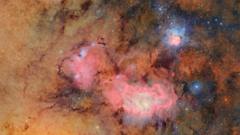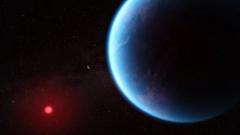The search is on for some of the most ethereal entities imagined by scientists: axions. These nearly weightless, dark particles, humorously named after a laundry detergent, could make up the bulk of the universe’s unseen matter, forming the hidden frameworks of galaxies. Their discovery would revolutionize current scientific principles about the universe.
Gray Rybka, a physicist from the University of Washington involved in the Axion Dark Matter eXperiment (ADMX), highlights the anticipation surrounding this research, stating, “For nearly 10 years we’ve been operating in a search mode, and any day we could make a discovery.” The ADMX experiment employs powerful magnetic fields in Seattle to elicit the presence of axions.
In parallel, astronomers are examining black hole behaviors and the formations of distant galaxies, utilizing the pioneering capabilities of the James Webb Space Telescope to find potential indicators of axions. Despite extensive exploration, definitive evidence remains elusive. The identification of axions would shed light on one of cosmology's biggest questions: what constitutes the universe?
Current astronomical observations reveal that the standard matter we can observe, comprising stars, planets, and galaxies, is merely a fraction of the universe’s total mass. The remainder is believed to be dark matter, which, while invisible, exerts enough gravitational influence to bind visible matter. Various particle candidates for dark matter have been proposed, with axions being among the leading possibilities, aiming to fill the gaps in the Standard Model of particle physics.
The quest for axions signifies an intriguing chapter in our pursuit to decode the universe’s structure and origins, with hope resting on upcoming discoveries that could significantly alter our cosmic narrative.











